It’s a cripple who walks, has no ears but talks.
It’s an eloquent mute, sees the world without eyes.
It is sharp as a sword. It moves like a snake.
It has a lover’s body and a darkened face.
لنگ رونده است، گوش نی و سخن ياب
گنگ فص نيحست، چشم بی و جهان ني
یزيت شمشير دارد و روش مار
(The Pen, by Rudaki)
Midflight, we got quite alarmed by the smell of smoke wafting through the cabin. Somon Air was the only airline flying to Dushanbe on dates that allowed us to participate in the UNDAF prioritization meeting. In 2014, Somon Air was not on the list of UN-approved airlines and we were flying at our own risk, which I was convinced we were doing anyway, even if the UN had approved of the airline. ... As it happened, a travelling Tajik luminary sitting in the front had decided that it was time for a smoke. As nobody else seemed to worry, we decided not to worry, too.
Dushanbe
As far as capitals in Central Asia go, Dushanbe is a rather unpretentious city, with neither an excess of grandiose Soviet architecture nor an exuberant nightlife. But Dushanbe certainly had its charmes, and as long one didn't mind negotiating potholed and dimly lit streets, there is enough to see and to learn for several days. Gabi and I had booked ourselves into a modest guesthouse, whose decor wetted our appetite for things to come.
I first had to get the two-day UNDAF exercise out of the way. The meeting, if you were to believe UNDGO's puffery, was going to set Tajikistan on an irrevocable path to economic growth and health for all. As always, once a senior offical had delivered his opening speech and left, the rather junior participants chatted away between meal times, and a facilitator with no particular stakes in the proceedings took photographs of colour coded cards. Looking at my records, I cannot make out any noticeable impact that meeting had on the children of Tajikistan.
The Haji Yaqub Mosque in Dushanbe. The vast majority of the Tajik population is Muslim. According to Wikipedia, while the Tajik constitution guarantees freedom of religion, there is a significant fear of Islamic extremism, both within the government and among the population at large.
The largest remaining Buddha in Central Asia is sleeping in the National Museum of Antiquities in Dushanbe. The Sleeping Buddha is 16 meters long.
Open air market in Dushanbe. In German language, Kohl is the word for cabbage, and Kohle is the word for coal. Many years ago, Dushanbe had a population of 200,000 and one quarter of them were Germans. Even today Dushanbe has a German brewery and pub.
While in Dushanbe, we joined a local hiking club for some daytrips into the mountains and valleys near Dushanbe.
Gabi setting off into the mountains
The winter is approaching, and soon life in the remote villages is going to get tough

In 2014, there were just some local hiking groups, run by students and catering for friends and expatriates. Some of these outfits have grown into veritable businesses, and today one can book enire hiking holidays - still basic but with a lot of local knowledge.
این جهان را نگر به چشم خرد
نی بدان چـشــم کاندرو نگری
همچو دریاســـت وز نکوکاری
کشـتيى ســاز تا بدان گذری
īn ǧahān-rā nigar ba čašm-i ḫirad
nē ba-d-ān čašm k'andar-ū nigarī
hamču daryā-st w'az nakūkārī
kištī’ī sāz tā ba-d-ān guẕarī
Diese Welt schau dir an mit dem Auge der Weisheit,
Nicht mit dem Auge, mit dem du sonst schaust.
Sie ist wie das Meer, und aus Wohltaten baust
Du ein Schiff, damit du die Weite durchschaust.
Look at this world with the eyes of wisdom.
Not with the eye you usually look with.
It is like the sea, and from good deeds
You will build a ship, so you can see through the vastness
(Rudaki)
Into the Interior: Lake Iskanderkul
Before one reaches anything north of Dushanbe, one has to cross a high snowcapped mountain range. On top of that range sits the infamous Anzob tunnel, whose local moniker has for a long time been the tunnel of death. It had been on the list of the 10 most dangerous roads in the world. The Anzob tunnel was put into use when it was only half completed, with only one unpaved carriageway, without light or ventilation. The 5 km long engineering debacle was opened for both directions, while work was simultaneously going on, potholes would swallow entire cars, and oncoming lorries with or without light barely could pass and often got stuck. For a while, drivers had to sign waivers acknowledging the dangers of accidents or suffocation.
Not long after our journey, in 2015, the tunnel was closed to allow final construction to be completed, and was officially reopened in 2017.
We rented a Landcruiser complete with Rustam, the driver. Rustam refused to speak anything else than Russian. On the upside, we learned some Russian.
Lake Iskanderkul lies in the middle of the Fann Mountains - a particularly beautiful spot (click on any image to enlarge).
In summer, some basic guesthouses invite tourists to linger. Now the lake was deserted.
We proceded past the lake to the hamlet of Sary-tag, where the road ends. Our guidebook had promised some simple accomodation, but everything was closed down for the winter. Upon our approach, we were invited to a homestead, where the lady of the house proceded to shuffle around matraces, pointing to a woodstove that she said would be put to use. Rustam remained unconvinced, and we also did not feel like imposing ourselves. So we went back all the way to find some much less inspiring accomodation in the centrally located small drab town of Ayni.
We proceded past the lake to the hamlet of Sary-tag, where the road ends. Our guidebook had promised some simple accomodation, but everything was closed down for the winter. Upon our approach, we were invited to a homestead, where the lady of the house proceded to shuffle around matraces, pointing to a woodstove that she said would be put to use. Rustam remained unconvinced, and we also did not feel like imposing ourselves. So we went back all the way to find some much less inspiring accomodation in the centrally located small drab town of Ayni.
The Zeravshan Valley
The Zeravshan valley harbours several points of interest for the intrepid traveller.
At the school, this contraption was meant to facilitate handwashing. It had neither water nor soap. We reported the situation back to UNICEF Dushanbe. The office diagnosed a lack of local ownership. If you ever happen to visit the Zeravshan valley, check out whether ownership has meanwhile been delivered, too.
By the way, a 2022 UNICEF survey of Hand Hygiene Facilities in Public Spaces in South Asia (click) found that (i) a large share of the facilities is not fully functional within a year of installation; (ii) providing access to disadvantaged groups is a major challenge; and (iii) the monitoring of hand hygiene facilities in public places is non-existent or piecemeal.
Entrance to the Bazar in Panjakent, the regional centre. Until 2018, the nearby border crossing to Uzbekistan was closed. It is open now, providing for the fastest overland route between Samarkand and Dushanbe.
The Proto-Urban Sarazm
A little further on in western direction of Panjakent, lies Sarazm, a UNESCO World Heritage site.
The entrance to Sarazm. Our expectations were high. Sarazm is an ancient town which dates back to the 4th millennium BC. The city would be about 5500 years old today, one of the oldest settlements in this part of the world.
Sarazm is of great interest for archaeologists. The excavations are protected by huge tin-roofs, which do not exactly inspire awe, nor a sense of beauty or history.
UNESCO attests an outstanding universal value to the site, which "demonstrates the existence of inter-regional trade and cultural interchanges over long distances across Central Asia. This was a long-lasting and prosperous proto-urban metropolis, at the north-eastern extremity of a vast area stretching from Mesopotamia to the Indus and the Iranian plateau".
While we have absolutely no reason to doubt the judgement of the UNESCO experts, we were somewhat at a loss at the sights and didn't know exactly what to think about this main exhibit.
Rudaki
Rudaki was a writer, singer and musician, who served as a court poet under the Samanids some 1300 years ago. His full name was Abu Abd Allah Ja'far ibn Muhammad ibn Hakim ibn Abd al-Rahman ibn Adam al-Rudhaki al-Sha'ir al-Samarqandi.
In Tajikistan, Rudaki is acknowledged as the "father of Tajik literature" and the country's most revered poet. In Iran, Rudaki is considered the "founder of New Persian poetry".
Rudaki died blind and impoverished in Panzhrud, in the northern foothills of the Fann Mountains. Most of his works have been lost. The Rudaki Mausoleum in Panzhrud was built only in 1958.
Inside the Rudaki mausoleum
hēč šādī nēst andar īn ǧahān
bartar az dīdār-i rō-yi dōstān
Kein' größ're Freud kennt diese Welt,
Wenn Aug' auf Freundes Antlitz fällt.
No joy in this world can contend
With the joy of seeing a friend
For more poetry by Rudaki, click here.
Onto Istaravshan
Istaravshan is a city-museum, one of central Asia's oldest towns of commerce and crafts.
The Mugh Tappa - a replika of the gate of the old citadel of Istaravshan
Locals of Istaravshan, with their feathered friend
The minaret near Khazrat-i-Shokh mausoleum
Kok Gumbaz, or the Blue Mosque, where the Moskvitch car seems to have found its final resting place.
They were still following us ...
Khujand
Like Istaravshan, Khujand is one of the oldest cities in Central Asia, dating back about 2,500 years to the Persian Empire. Situated in the fertile Ferghana Valley, Khujand was a major city along the ancient Silk Road, and its proximity to the borders of Uzbekistan and Kyrgyzstan gives it a cosmopolitan flair.
Khujand fortress
At a betting house in Khujand, in 2014. Since 2006, Messi and the FC Barcelona have been carrying the UNICEF logo. Starting with the 2022/23 season, the FC Barcelona will sport the UNHCR logo. The former UNICEF goodwill ambassador and billionaire Messi is now tourism ambassador for Saudi Arabia .
Ismoil Somoni is considered by most modern Tajiks to be the national hero of Tajikistan. Ismoil Somoni gave his name both to the Tajik currency and the country's highest peak. The Somoni statue in the center of Khujand has replaced...
... Lenin. Lenin has been moved to the outskirts, but with a height of 22 meters it is still the largest standing Lenin statue in Central Asia. For many years, Khujand had been named Leninabad.
No visit to Tajikistan is complete without one or more visits to a chaikhona (teahouse). The teahouses can be as large as banquet halls, and several dozens of caged birds may be part of the inventory. One can choose between modern and traditional seating arrangements. Here, Rustam and Gabi insist on going local.
Hissor
Hissor (Hissar/Gissar/Hisor) was the main settlement in the area for about 2000 years, before the founding of Dushanbe. It was an important staging post on the old trading routes. In medieval times, Hissor was an independent khanate before being incorporated in the Emirate of Bukhara.
The place was razed countless times by every historical conqueror worth his salt, including Cyrus, Alexander, the Arabs, Genghis Khan, Timur and finally the Red Army, so few things remain of ancient Hissor. Although the Tajik government’s restoration has brought the fortress back to life, it is unclear in how far this new structure actually resembles the original. There also are two madrassas and a small museum.
To many far-travelled tourists, the fortress may look like a Disney Version of itself, and many people may be searching for something more ancient-looking. But the Tajik love it, and it has become a famous backdrop for many weddings.
We witnessed this wedding (and two more in the waiting lines). Check out our video below, which has some of the wedding music. Nonetheless, we were missing the smile on the face of the bride.
For more poetry by Rudaki, click here.
*****
Other photo-stories by Detlef:
- Lunae Montes - a journey to the source of the Nile, in 1980
- Operation Lifeline Sudan, the first years in pictures
- The Somalia Experience
- Into the Midnight Sun (Journey to the North Cape)
- A Walk on the Wild Side (New York)
- The Door to Hell and the Path to Health (Turkmenistan)
- Magic South (Southern Africa)
- Azhdahak (from Germany to Armenia, by road)
- Top of Mexico
- At the edge of the bog - where we live
Detlef can be contacted via detlefpalm55@gmail.com .


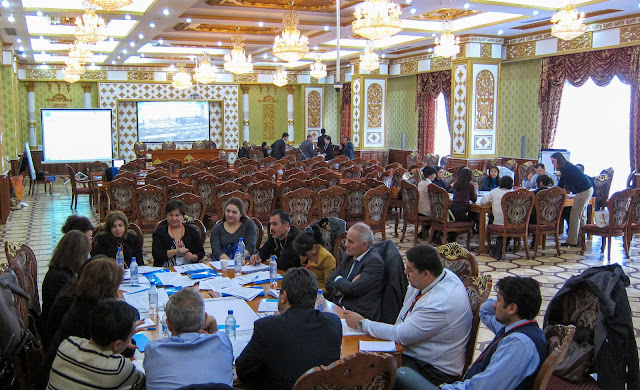













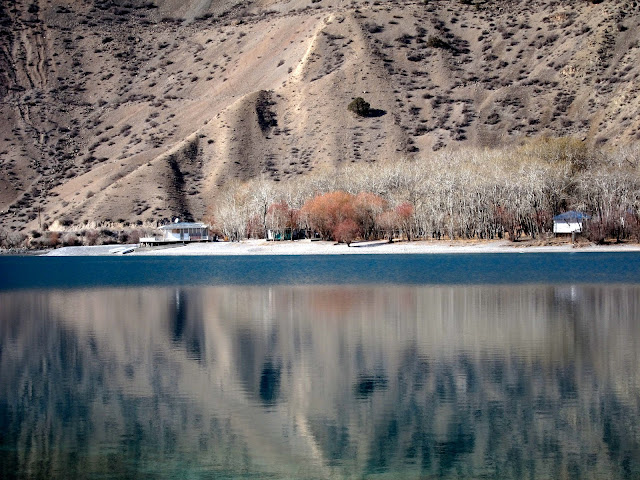


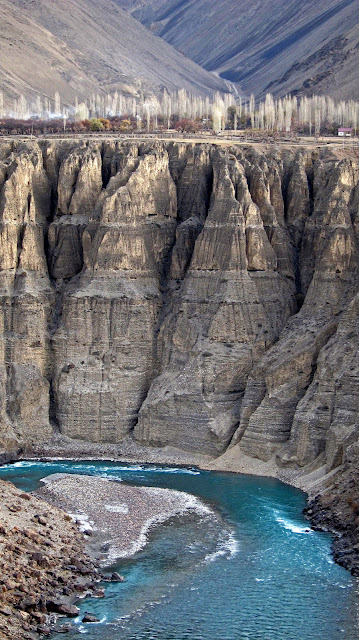

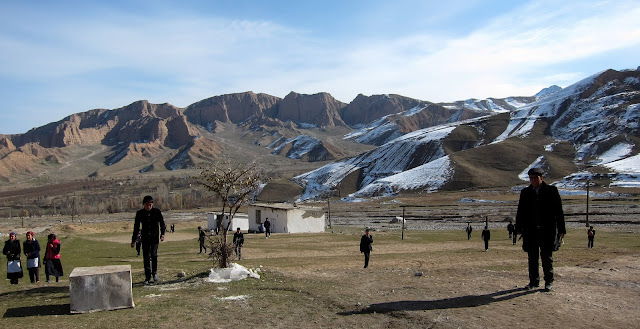









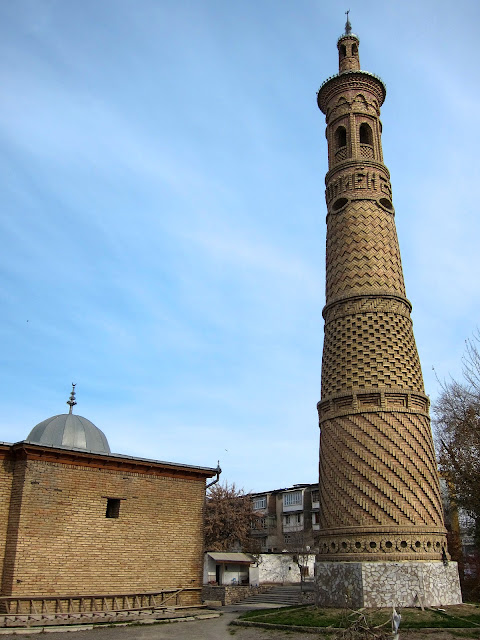










In a country where you can build and weave like this, you can most certainly also look after your children without the help of UNICEF.
ReplyDeleteAlways a pleasure to see and read... thank you Detlef.
ReplyDeleteAs always, the lovely pictures and narrative gives us the readers the story! Detlef, Thank you for sharing. Sree
ReplyDeleteThanks Detlef for taking us virtually along on this adventurous trip and for sharing the poetry of Rudaki in three languages. Quite a feat.
ReplyDeleteAs always, your travel story offers lessons in history and geography (two for the price of one, lol). A fascinating narrative - your photo collection - both stark yet beautiful. Certainly whets my appetite to travel to the five "STANS". Thanks for sharing another Palm duo adventure.
ReplyDeleteFascinating, thankyou!
ReplyDeleteDuring my five years in Dushanbe during less peaceful times I did not get to see all of these places, but I am happy that the photos came out so I could see what I missed. There are plenty of interesting people to meet in Tajikistan but perhaps it is necessary to spend some time in the rural areas without formal guides. It will be interesting to see what will happen to the Tajiks now with the changes in Ukraine and elsewhere. Tajikistan is rather isolated geographically so the issue of international trade is important. Just after independence the country had lost about 90% of its GDP and poverty was alarming, though in many cases pretty well hidden.
ReplyDeleteNo country has ever lost 90% of its GDP
ReplyDelete